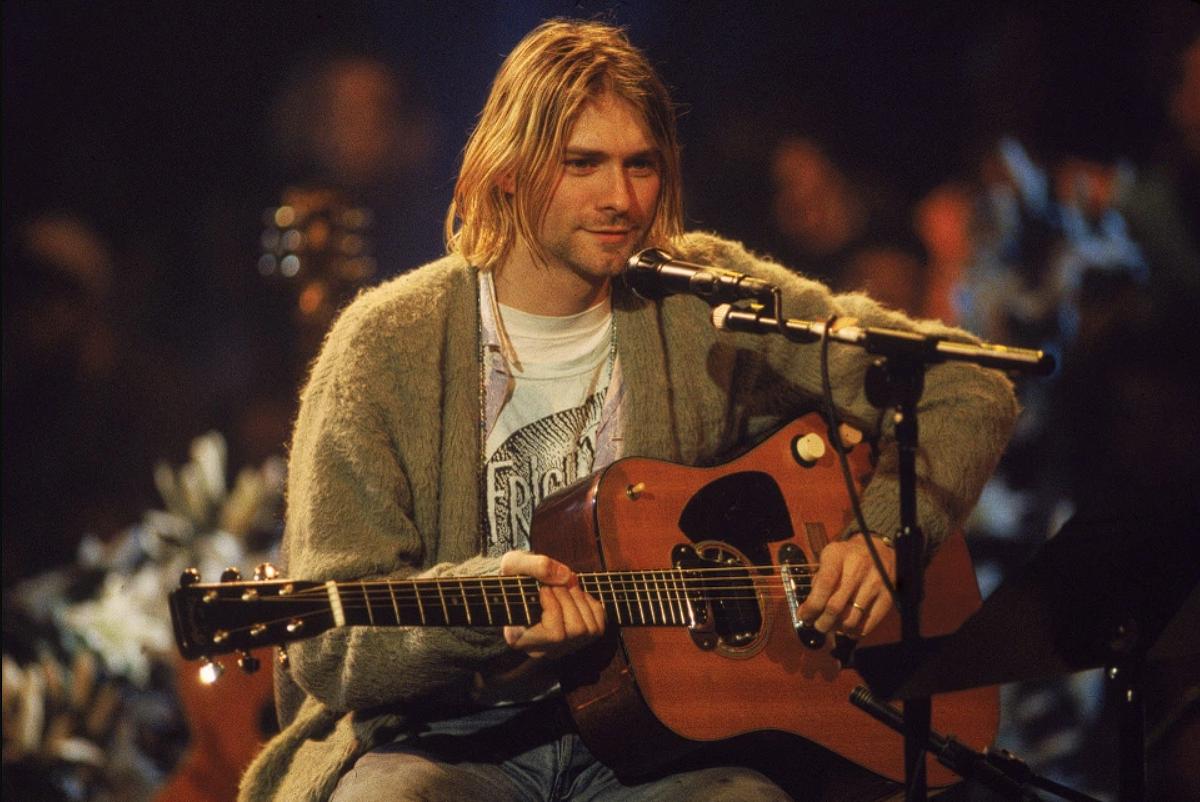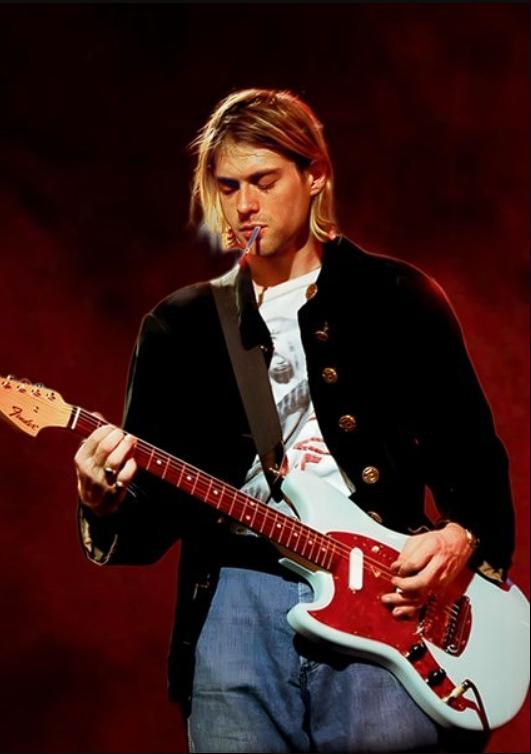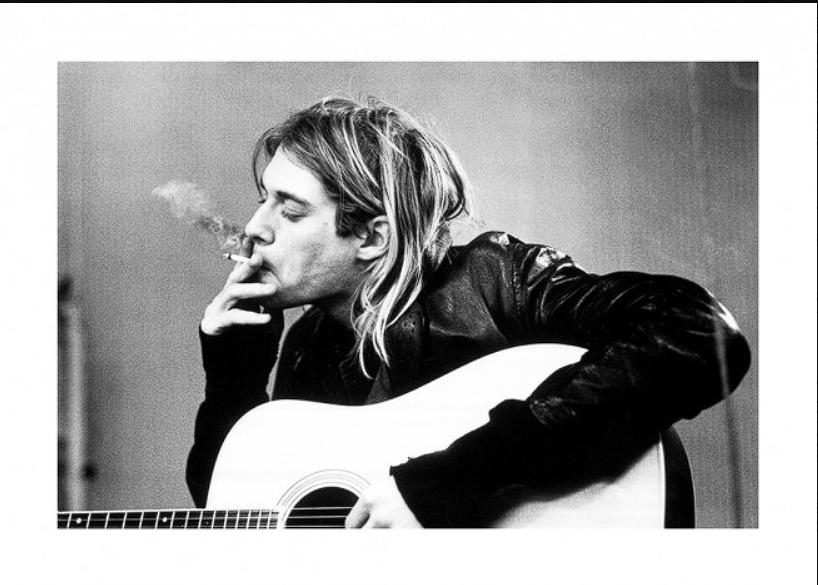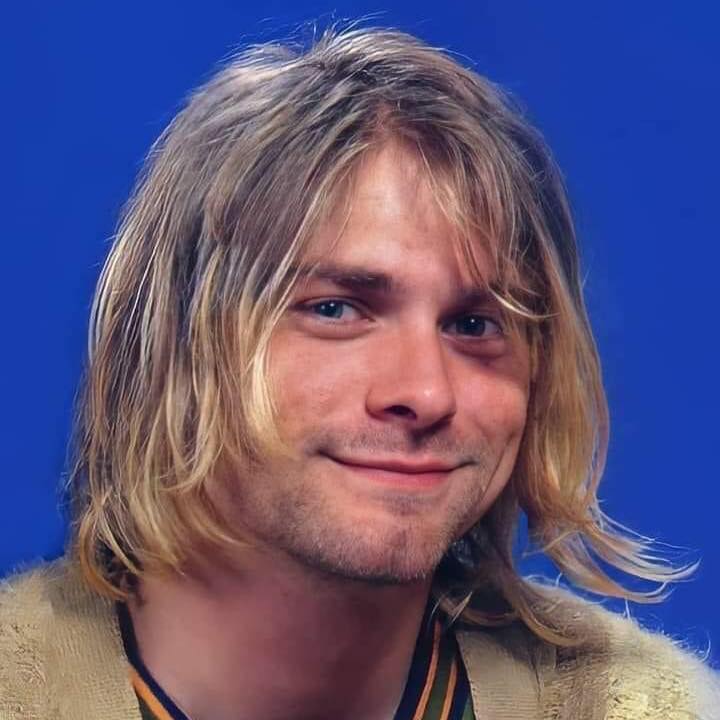Kurt Cobain: The Voice of a Lost Generation
A Broken Childhood in Aberdeen
Kurt Cobain did not just sing — he screamed, he whispered, he wept for a generation that felt invisible. His music was a raw nerve exposed to the cold air of the 1990s, and through him, millions of restless souls found someone who understood their silent rage.
Born on February 20, 1967, in the rainy town of Aberdeen, Washington, Kurt’s childhood was stitched together with broken dreams and empty spaces. His parents’ divorce when he was nine shattered his sense of security, leaving a wound that never truly healed. Kurt bounced between family members, carrying the weight of loneliness early, finding refuge in sketchbooks, punk records, and eventually, a battered guitar that would become his salvation.
In the dreary streets of Aberdeen, Kurt learned early that dreams were fragile things. Yet somewhere deep within, he clung to the hope that art could be a way out.
Nirvana and the Sound of Disillusionment
The Birth of a Movement
When Nirvana exploded onto the scene with Smells Like Teen Spirit in 1991, it wasn’t just the launch of a new band — it was the birth of a cultural earthquake. The rawness, the aching honesty of their sound, tore through the polished facade of the music industry. Kurt, with his torn jeans and haunted eyes, became the reluctant spokesperson for Generation X — a generation disillusioned with glossy promises and broken institutions.
He never sought the pedestal, yet he couldn’t escape it. In every rasping lyric and jagged riff, Kurt poured out the ache of those who felt lost, unwanted, unseen. Nevermind wasn’t just an album; it was an anthem for the lost.
“I’d rather be hated for who I am than loved for who I am not.”
— Kurt Cobain
Wrestling with Fame
Fame, for Kurt, was a double-edged sword. He craved the connection that music brought, yet recoiled from the spotlight’s harsh glare. The very thing that gave him a platform also became a prison. He once admitted, “Success to me seems to be the enemy.”
As Nirvana’s popularity soared, Kurt struggled under the crushing expectations. Chronic health problems and depression gnawed at him, and drugs became both a shield and a trap — a desperate attempt to numb the noise.
Love and Fragility
Kurt and Courtney
In 1992, Kurt married Courtney Love, a relationship that was as intense and chaotic as his music. Their love story was messy, beautiful, and tragic — a bond forged in the fires of fame, addiction, and a shared understanding of pain. Together, they had a daughter, Frances Bean Cobain, who became Kurt’s last tether to hope.
Friends often recalled how tender Kurt was with Frances. In private moments, he was not a rock god but simply a father, trying, in his own broken way, to give her the love he had so often been denied.
“I don’t have the passion anymore, and so remember, it’s better to burn out than to fade away.”
— Kurt Cobain’s farewell letter
The Final Days
Behind the flannel shirts and messy blonde hair was a poet — fragile, angry, tender. Kurt Cobain wrote not for stardom but because he couldn’t not write; it was the only language his heart could speak without breaking completely.
In the weeks leading up to his death, Kurt’s struggles deepened. A failed intervention, a stint in rehab, and his desperate need for escape culminated in a heartbreaking end. On April 5, 1994, at the age of 27, Kurt Cobain died by suicide, leaving behind a letter filled with love, sorrow, and a haunting final goodbye.
Legacy: The Eternal Echo
Kurt Cobain’s death left a hole that no artist has ever truly filled. Yet, his spirit refuses to be silenced. Nirvana’s music continues to inspire new generations, from garage bands to major artists, who find in his words the rare permission to be messy, flawed, and real.
His influence stretched far beyond music. Kurt became a symbol — not of despair, but of brutal honesty. His life and work remind us that pain must be spoken, even when it feels unbearable.
Today, tributes to Kurt fill the world: murals in Seattle, exhibitions of his artwork, books penned by those who loved him and those who still ache for him. His daughter Frances Bean, now an artist herself, carries on a legacy not just of fame but of fierce individuality and resilience.
“Thank you for the tragedy. I need it for my art.”
— Kurt Cobain
Conclusion
Kurt Cobain did not belong to the world of shiny dreams and bright lights. He belonged to the dreamers, the broken, the brave. His voice — raw, imperfect, achingly human — still floats through the air whenever Come As You Are or Heart-Shaped Box plays. And as long as there are those who feel unseen, unheard, and unloved, Kurt’s echo will never truly fade.
